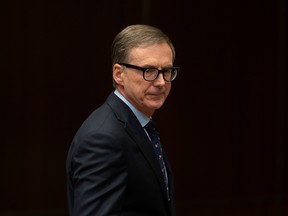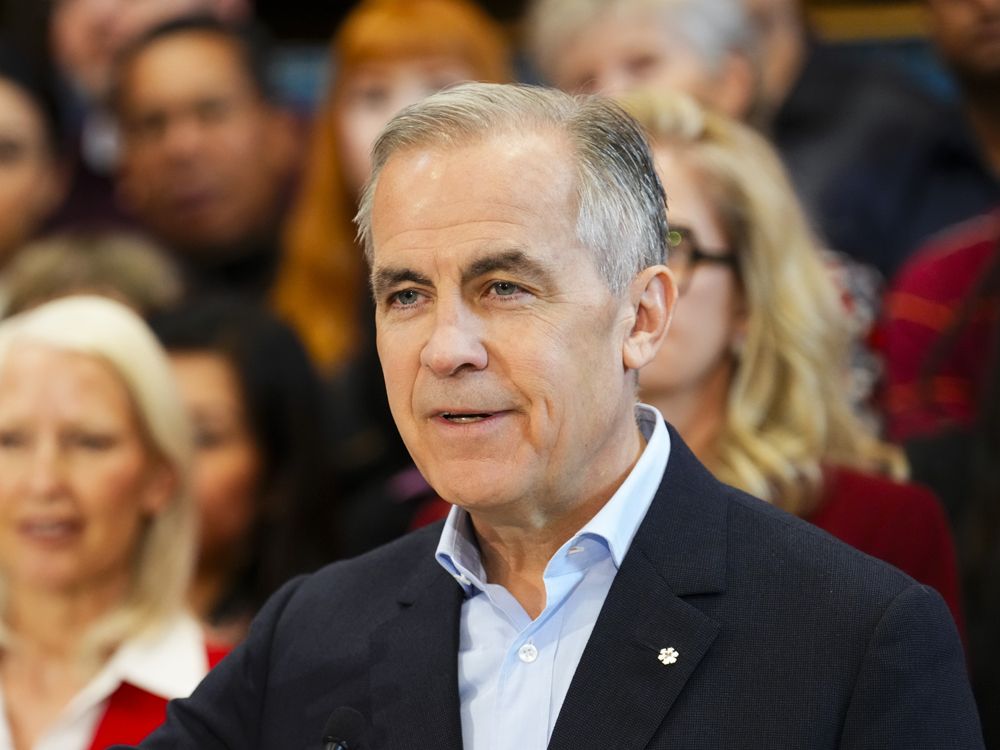Economists react to Bank of Canada’s latest decision to hold and predict where policymakers are headed next
Article content
The Bank of Canada held its benchmark interest rate at five per cent for the fourth consecutive time on Jan. 24. Here’s what economists, who widely expected the bank to hold, had to say about the announcement and when Canadians can expect a rate cut from the central bank.
Stephen Brown, Capital Economics
Article content
“The big change in the policy statement was that the bank dropped its bias toward more tightening,” said Stephen Brown, deputy chief North America economist at Capital Economics, in a note following the rate announcement.
Advertisement 2
Article content
He is interpreting that to mean Bank of Canada governor Tiff Macklem is edging closer to making his first rate cut, though “there was no sign that cuts are imminent,” Brown said.
The central bank could be of the mind now that inflation isn’t as bad as the headline numbers might suggest, Brown added, noting that the bank’s statement referenced the “outsized role” shelter costs — mortgage interest costs and rents — are having on the consumer price index.
At this stage, the central bank still believes the Canadian economy can avoid a recession and is calling for 2024 GDP of 0.8 per cent. However, Brown believes the bank is overestimating growth and that will force Macklem to shift to cuts sooner than expected.
“Given the shift in tone today, we are sticking to our view that the bank will be prepared to make policy less restrictive by beginning to cut interest rates at the April policy meeting,” Brown said.
Avery Shenfeld, CIBC
Avery Shenfeld, chief economist at CIBC World Markets, noted that the bank dropped its language regarding the need to hike rates again if inflation persisted, replacing that “hawkish bias” with the more cut-friendly wording that it remains “concerned” about persistent core inflation.
Article content
Advertisement 3
Article content
Shenfeld highlighted that the bank is forecasting that growth will pick up in the second half of the year and wondered if that was tied to its expectation for lower rates.
“The governor noted that the meeting has shifted from a discussion of whether rates are high enough to one about how long they need to keep rates at five per cent,” he said. That, he said, was a “dovish tilt … but is still consistent with our call for a first rate cut in June, with as much at 150 basis points of cuts on tap this year if, as we expect, we’ll need that to get the economy moving again after its current stall.”
Charles St-Arnaud, Alberta Central
Inflation remains too elevated for the Bank of Canada, and Charles St-Arnaud, chief economist of Alberta Central, expects it won’t make any moves to cut rates until its preferred measures of core inflation slows to around 2.5 per cent year over year — “something we do not expect until May 2024,” St–Arnaud said.
Currently, those core measures are in the 3.5 per cent range.
“However, a much weaker economy in 2024 is a risk that could force the BoC to move sooner,” he said, noting that a drop in job hiring or outright employment losses could be the deciding factor.
Advertisement 4
Article content
“The tone of the communiqué suggests that the BoC believes it is done tightening monetary policy but is not yet ready to declare victory in its fight against inflation,” St-Arnaud said. “The focus is now on how long interest rates will need to remain elevated to achieve its objective.”
Unless the economy says otherwise, St-Arnaud expects the opportunity to make the first rate cut will come in the middle of the year.
Nathan Janzen, Royal Bank of Canada
Although the Bank of Canada said in its policy statement that it is still worried about inflation, Nathan Janzen, assistant chief economist at Royal Bank of Canada, said there are plenty of reasons to believe that inflation will continue to slow.
Recommended from Editorial
Among them is the “softening economic backdrop,” including a sixth consecutive monthly decline in output per capita. The jobless rate, which has increased as employment is no longer able to match population growth, is another factor. Further, the central bank now estimates the economy has excess supply, taking pressure off inflation.
“We expect slower price growth alongside a weakening economic backdrop will push the BoC to start gradually lowering the policy rate late by mid-year,” Janzen said.
• Email: gmvsuhanic@postmedia.com
Bookmark our website and support our journalism: Don’t miss the business news you need to know — add financialpost.com to your bookmarks and sign up for our newsletters here.
Article content
When economists think the Bank of Canada will cut interest rates
2024-01-24 17:42:19





